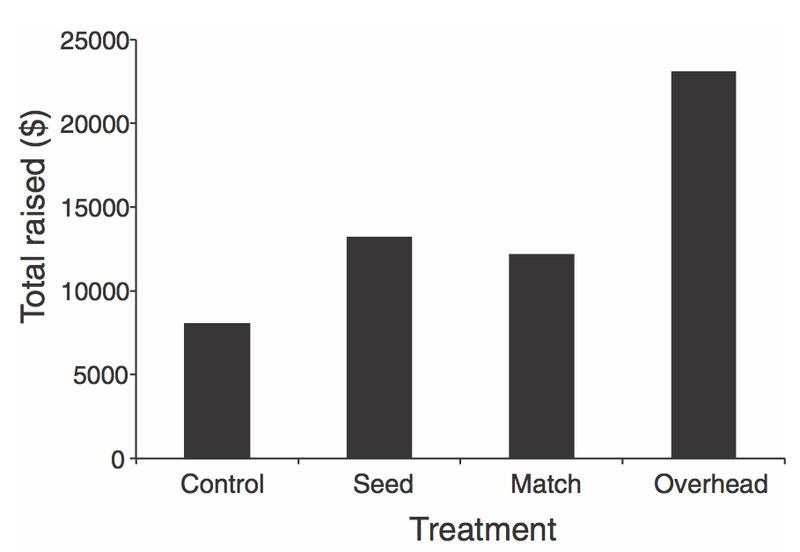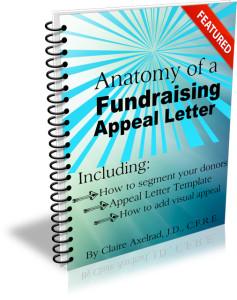 To be a donor-centered fundraising expert, you must:
To be a donor-centered fundraising expert, you must:
(1) Know what donors love, and
(2) Offer these lovable things to them.
There are three things I’ve found donors love when it comes to making donations.
- To leverage their money.
- To be part of a winning strategy.
- To be in control of how their money is used.
Got it?
It’s that simple; yet very few organizations successfully offer these things to their donors. Instead, they fail their supporters by doing one or more of the following (take a look at your current appeal and see if you may be guilty of any of these sins):
- Asking donors to do things they don’t want to do.
- Offering limited giving options.
- Making folks wonder where their gift will really be applied.
- Failing to demonstrate to the donor what’s in it for them.
This is all wrong!
Today I’m here to tell you what works. I’ve not only found these four things to be true anecdotally, based on personal experience with a range of different charities, but there’s also research to back this up.
Ready to learn the four secrets that will dramatically ramp up your fundraising this year?
Let’s begin with the research.
4 Different Appeal Strategies
Behavioral economist, Uri Gneezy, led a study in which 40,000 donors were randomly sent one of four different appeals:
-
A simple ask for donations.
-
An appeal to build on seed funding of $10,000.
-
An appeal saying donations would be matched dollar-for-dollar up to $10,000.
-
A no-overhead appeal saying the donor’s gift would go entirely to programming; an existing $10,000 in funds would be used to cover overhead.
One simple ask. Three asks accompanied by potentially appealing, donor-centered benefits.
Which appeals do you think worked best?
I’ll give you a hint: The bottom performer was the simple appeal.
That means if the appeal you’re planning for your year-end fundraising has none of these donor-beneficial bells and whistles, you may want to rethink.

4 Strategies to Dramatically Increase Nonprofit Donations
1. An Appeal to Complete the Project
This is the “seed money” appeal. Donors want to join a winning proposition. When all you do is wring your hands and talk about the dire need, you paint a picture of a sinking ship. Who wants to board a ship that’s about to go down? Who wants to throw their hard-earned money down a black hole? Not enough people!
When you can tell folks you’ve already got seed funding, and you need their support to put you over the top, this is a more appealing investment proposition.
First, your donor feels someone else has made the decision to invest with you. That short-cuts their own decision-making by serving as “social proof.”
Second, your donor knows their gift won’t just be a drop in the bucket. They know they’ve a very good chance of seeing the desired impact of their philanthropy (which is why they’re giving) come to fruition.They know they’re not in this alone. They’re part of a like-minded community.
2. A Matching Grant
This has long been my favorite appeal strategy. Folks just love to stretch their dollars, and a pitch to “double your money” has a lot of appeal.
Interestingly, there’s research showing that tripling or even quadrupling your offer won’t result in any more increased giving. The thing that triggers the giving is the fact of the available leverage, not the amount.
You still may have time to secure a matching (also known as a challenge) grant. Here are some ways to do this:
- Ask a current major donor if you can use their gift as a challenge.
- Approach a business who may like the publicity you can offer by associating them with the challenge.
- See if a foundation donor might consider increasing the size of their grant to help you leverage their support and build your individual donor base (this is a good strategy for funders who want you to demonstrate that you can become self-sufficient moving forward, and don’t want you to rely on them indefinitely).
- Ask your board if they’d like to contribute jointly to create a match.
3. A “No-Overhead” Appeal
First, a confession. It pains me, deeply, to tell you how much this strategy seems to work. I don’t want it to work. I wish everyone understood nonprofits need overhead.
You can’t operate without staff. And facilities. And toilet paper. And marketing. And fundraising. Which is why I’ve been on a soapbox for years warning about the “overhead myth” and how it leads to a nonprofit starvation cycle. I hate how nonprofits collude in perpetuating this myth, by touting how low their overhead is and ignoring the fact this may be actually stunting their growth and effectiveness.
Nonetheless, this “insider” perspective ignores the fact that “outsiders” (donors) don’t really want to give money to pay for the CEO’s salary. It’s not necessarily that they don’t understand the need for overhead (although I think, sometimes, this is true – and nonprofits should be truthful about their need for overhead and direct about the associated costs).
The no-overhead letters in the research study worked in every regard. Not only did they raise triple the amount of the simple ask letter, they also brought in significantly more donors.
Interestingly, a related experiment found that donors were unwilling to contribute to a charity when they were simply told it had a high overhead. However, if they were told the overhead had been “covered” by another donor, the existence of this overhead no longer served as a deterrent. In other words, overhead is perceived as okay – “just not in my neighborhood!”
People want the warm, fuzzy feeling of knowing their personal donation had direct impact.
Of course some of your major donors, including board members, may well understand the necessity of overhead. Feel free to ask these folks for unrestricted gifts so you can apply them to overhead and make room for those who prefer to more specifically designate their giving.
Which brings us to…
4. A Specific Project Appeal
Even if you don’t go the overhead/no-overhead route, I strongly advise enabling designated (aka restricted) giving.
In my practice over three decades, I found approximately 50% of donors preferred to give this way. My evidence is anecdotal, but often these donors made larger gifts.
If you can tap into your donor’s specific passions, they’ll give more passionately. It’s just common sense.
Here are some ways to do this:
- Ask for a specific program or project.
- Ideally, segment your mailing list and tailor your appeal to specific donor interests.
- Include different options for gift designations on your remit piece and donation landing page.
It’s not that difficult to divide your operating budget into a range of funding opportunities that, essentially, combine to be the functional equivalent of unrestricted operating expenses. You’re just taking the whole and putting it into different packages.
When your donor sees a package that attracts them, they’re more likely to open it than if you didn’t take the time to wrap up their gift.
Yes, offering donors investment opportunities is a ‘gift.’
It’s a gift of the opportunity to do something meaningful. To accomplish something bigger than what they could do on their own. To leverage their investment and make a real difference.
Make sure you take the time to serve up benefit-filled gifts in ways that are appealing to your would-be supporters.
Don’t offer them gifts you want. Offer them gifts they want.
This is the job of the true philanthropy facilitator — and I’m confident that’s YOU!
Get Your Step-by-Step Guide to Crafting a Killer Appeal Letter or Email

This 62-page guide will take your appeal letter from run of the mill to out of the ballpark!
I guarantee you’ll raise more money if you follow the guidelines in my Anatomy of a Fundraising Appeal Letter plus Sample Template. And if you’re not happy for any reason, you’ve got my 30-day, no-questions-asked refund policy. Make the next two months really count! To your success!
Photo of a hopeful sign spotted on the door of a semi-shuttered business, by Claire Axelrad




